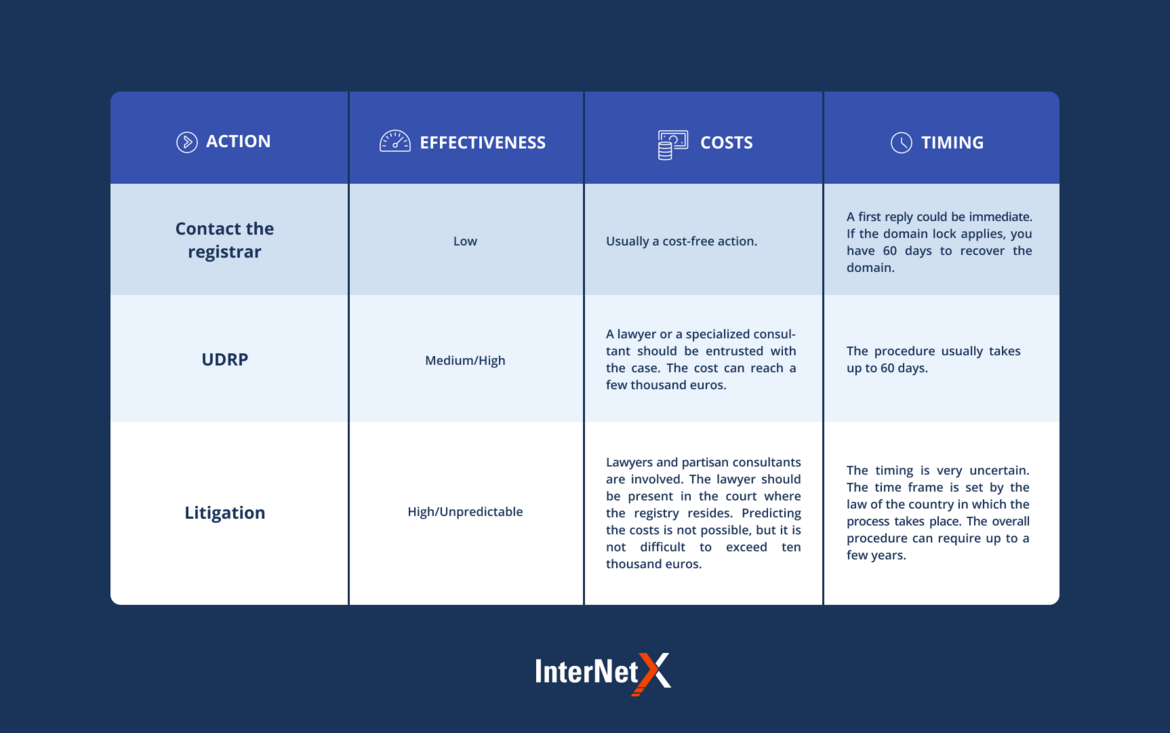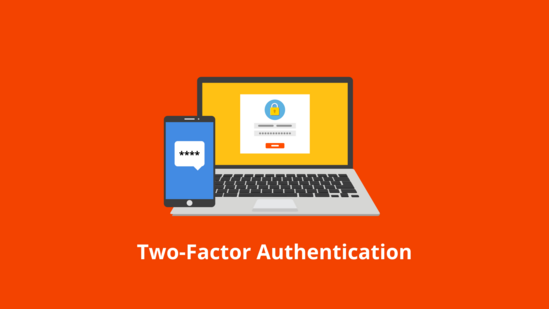Let’s talk about Sarah, a way designer from Berlin, and her bad adventure with domain hijacking. She had recently launched her minor cyberspace retail showcase of vintage and pin-up article of clothing and dresses. She was very lucky to get a valuable domain name matching perfectly the name of her business. Within a few years the revenue kickoff doubled, and so tripled, and what had started as a hobby was near to get her dream full-time task. I day i of her best clients wrote to her that there seemed to be a problem with her website. Sarah typed the address in the browser bar and she constitute out her domain name redirected to another like website with vintage products. Just despite looking very like, this was not her showcase website! She rushed to telephone call her IT expert but she was confused hearing: “Information technology looks like your domain has been hijacked”. She had never heard of this term earlier and, unfortunately, she had to experience information technology in the worst fashion. The unexpected worst case scenario had occurred: someone managed to obtain the ownership of her domain name, transferred it, and perhaps even sold it! Now it belongs to someone else, perhaps a competitor in another land. Overnight, forth with her spider web presence, she lost access to her online business identity.
Domain hijacking has critical consequences for your business
Are you a domain owner or do yous run multiple domains for your clients? A successful domain hijacking is most equivalent to depriving you of your business, profits, and earnings and it seriously impacts your future, leading to loss of customers and a worse online reputation. Among all the possible worst-case scenarios, domain hijacking can exist a real nightmare come true. It happens out of the blue without warnings and it can remain unnoticed for hours or fifty-fifty weeks. Nosotros invite you to keep reading to observe how domains can get stolen and what you lot can do to avoid this from happening.
What is hijacking?
In computer science, hijacking attacks are aimed at gaining unauthorized admission to information or services in the IT infrastructure.
Depending on where the assault is carried out, nosotros tin identify unlike types of hijacking techniques:
- DNS hijacking, also called DNS poisoning, corrupts the resolution of the DNS queries.
- IP hijacking, also known as BGP or road hijacking, disrupts the normal routing of the network using the Border Gateway Protocol (BGP) to illegitimately take over groups of IP addresses.
- URL hijacking, also called typosquatting, relies on typos or mistakes made by the users in the website addresses. This fashion they are led to malicious websites.
- Domain hijacking, or domain theft, occurs when the hacker changes the registration of a domain name.
Domain hijacking ways losing the ownership of your domain proper name
Unremarkably, domain hijacking aims to connect an unsuspecting user to a malicious website by pretending to be the 1 the user wanted to admission. But mostly speaking, domain hijacking is understood as a grade of theft since the aggressor gains access to a domain proper name without the consent of the original registrant.
How does domain name hijacking work?
When you type the address of a domain proper name in the browser, it volition retrieve a DNS record. If this search is performed for the first time, or the tape is no longer available in the cache, the browser has to communicate with a name server. This communication between browser/device and server can be tricky: it is exactly during the interaction and exchange of requests and responses that malicious actions accept the potential to strike. Furthermore, communications that are not encrypted offer hackers several ways to intercept and redirect users. In item, domain hijacking occurs when a hacker attempts to access the account details associated with a domain to brand unauthorized changes. This can include changing DNS name servers, setting a new domain status, or transferring the domain proper name.
How can you protect yourself against domain hijacking?
In that location are several means hackers can hijack your domain name. The vulnerabilities that come into play are not only technical ones. Every bit a domain owner, you play the main role in making sure to apply the strongest defense force around your digital assets. Sometimes it’s not your fault as a registrant. The hijackers could make their style to your domain through your domain provider infrastructure. Let’s see how you as the registrant, the domain provider and other technical aspects are involved in securing a domain name against hijacking.
Find out more about InterNetX’s domain security
The registrant’s vulnerable side
The registrant’s fail of proper security measures is 1 of the main reasons domains go hijacked. Once you lot have registered a new domain name yous get access to its settings. Social engineering science including phishing techniques, malware, such as trojan, keylogger, or spyware tin can infect your systems and easily allow hackers to gain your credentials to access your domain management console. Furthermore, a diversity of personal data, such every bit names, email addresses, and other data related to domain registrations can be establish in the WHOIS data records. At that place hackers tin can easily find information about you and your domain name. If they succeed in hacking your accounts, the domain buying and related notifications can be changed. If possible, hide or use unlike login information for your domain possessor’s profile and the domain direction system.
Possible vulnerabilities affecting the domain provider
The other actor involved in domain management is the provider. Registrars are usually aware of possible security issues but vulnerabilities can affect fifty-fifty major and global companies. If the hacker succeeds in accessing the backend services provided by the registrar, there is a high-adventure potential for your domains. Hence, always make sure to cull a trusted domain provider. InterNetX for example offers four layers of domain security, offering a sophisticated security concept on the administration, domain, proper noun server, and server-side. Farther safety measures include 2FA, DNSSEC, Anycast, IP restriction, WHOIS privacy, domain monitoring services, and admission control (ACL) management in the all-in-one domain management platform AutoDNS.
Technical reasons why domains become hijacked
There may as well exist a third problem that could cause the hijacking of your domain. Namely: Your domain registration has expired and y’all have not renewed it. If yous fail in following this deadline, someone may register your domain and you will lose not only your domain but all services related to it, such equally e-mail and webspace. This action is completely legal and you won’t take the take chances to merits it dorsum. To preclude such a scenario, make sure to plough on the automobile-renewal pick and register the domains for longer periods.

Observe out more on domain renewal in our article.
What are hijacked domains used for?
Why are domain names hijacked? What can a hijacker do with a stolen domain? Hackers may want to steal your domain for several reasons. Every bit you can imagine they are always looking for economic gain. Usually, the hijacked domains become inaccessible and your online identity nether that domain, i.eastward. your website, is no longer to be found. A ruinous effect since your business organization relies on its website equally a source of income. This is why the hacker may ask for a ransom to transfer the domain back to y’all. In other cases, the hijacker could supercede your website with another like i and misuse information technology for phishing or other malicious activity. A existent threat for your users who may mistakenly enter their sensitive information, such every bit banking company details, on this new artificial website. The hacker could also impersonate your make identity and damage your reputation with fake news or negative statements. The hacker can also resell your domain name, one time it was successfully transferred.
Notable cases of domain hijacking
In the by few years, there were notable cases of successful domain thefts, targeting very well-known brands also.
Probably the commencement case ever to capture media attention is related to the sex.com-domain during the dot-com bubble in the late 90s. For the kickoff time, the U.S. court alleged that internet domain names should be treated as real property, turning domain hijacking into a class of theft.
On Feb 25, 2015, Lenovo’south website redirected the users to an attacker-controlled page labeled as beingness “the new and improved rebranded Lenovo website”. The same hackers managed to hijack Google’s master search page for Vietnam, redirecting users.
In recent years domain hijacking was used besides in some serious and sophisticated multi-year spying attacks similar the state-sponsored DNSpionage entrada targeting Lebanon and the United Arab Emirates (UAE), and the Body of water Turtle, targeting national security organizations, mostly in the Middle Due east and North Africa. This is just the tip of the iceberg because the larger and nearly serious domain thefts target SMEs who mostly do not have plenty knowledge or skills to face and eventually solve the problem.
Three methods to recover a stolen domain
If the nightmare came true – all is non lost! Fortunately, there is still a gamble you can recover a hijacked domain. Hither we present to you three possible methods, with dissimilar degrees of efficiency, cost, and timing.
i. Contact your registrar
Your domain provider is always the first indicate of contact when it comes to your domains. At the very moment you realize your domain has been stolen, ask immediately for the transfer to be canceled. Usually, the transfer procedure is field of study to a threescore-twenty-four hours transfer lock. The gamble of recovery is higher if the domain has been transferred to an internal account at the same registrar, while if it has already been transferred to a unlike ane, the registrar’s willingness to interact comes into play. However, information technology is always appropriate to attempt this first method right abroad, in the hope of resolving the issue rapidly and containing whatever harm.
2. Accost a UDRP complaint or equivalent procedures
The Compatible Domain-Name Dispute-Resolution Policy (UDRP) is an agreement that all ICANN-accredited registrars must abide by to settle disputes over the buying of domain names for generic extensions such every bit .com, .net, .info, etc. It was mainly designed to gainsay cybersquatting or infringements of registered trademarks, therefore it might not yield results if your domain name is not connected to a trademark. Amidst its clauses, still, the policy tin can be invoked also to curb abusive and bad religion hoarding. Therefore, it is not excluded that it may be useful in some other cases.
If you own a registered trademark, the UDRP is the right procedure to follow. In this case, it has the reward of allowing firsthand blocking of the domain, preventing its data from existence inverse or transferred to another registrar. It should also cake internal transfers betwixt accounts of the same registrar. Once over again, it all depends on how much the latter is cooperating.
Unfortunately, in the by years, the UDRP has opened the doors to some malicious actions called Reverse Domain Proper name Hijacking (RDNH). This exercise occurs when the hacker tries to deprive someone of the domain name by alleging in bad organized religion the trademark rights connected to the domain.
Be aware that if your domain name is under a ccTLD like .de, or .it, the national registries have their own regulations similar to UDRP, which let y’all to object in case of improper transfers.
3. Pursue legal activity
The UDRP has proved to be an effective tool on several occasions, but it may not be the right one for you in the issue of a stolen domain. In this instance, the communication of a lawyer or an expert in the domain industry is highly suggested. This action tin be filed both for the domain theft likewise equally for the likely hacking performance backside it. You can entreatment the court even if at that place are no registered trademark violations. The downside is that this procedure is frequently very lengthy and highly expensive. Furthermore, it should be borne in listen that the process is carried out in the court where the relevant registry resides. For example, a legal action connected to a .com domain volition take place in Northern Virginia in the United states where the Verisign registry is based.
Just if the court supports your claim, yous tin be sure to receive dorsum your domain. It is going to be the registry’due south responsibility to take intendance of transferring the ownership of the domain to you, bypassing the possibly uncooperative registrar.

How tin you protect your domain?
The best defense is a good offense – and so here are some tips to prevent domain hijacking and secure your domain names.
1. Choose a reliable domain provider
You are not sure about the criteria that aid you choose the best partner? First of all, make sure yous’re relying on an ICANN-accredited registrar. Price is an important factor but do non forget nearly security: choose a registrar that offers constructive and constant technical support and fantabulous DNS management.
2. Use the DNSSEC protocol
The DNSSEC (Domain Proper noun System Security Extensions) protocol allows the browser to authenticate the source, strengthening the actuality and integrity of your domain.
iii. Set potent passwords and change them periodically
Having a potent countersign is a vital practise in the digital environs. In one case you have created your domain management business relationship, gear up a strong and unique countersign, and keep your associated email account secure.
4. Employ two-factor authentication
The 2FA adds an extra security layer. You can utilize it to log into your AutoDNS account for example and information technology volition protect yous from losing control over your domain name if someone tries to gain access to your username and countersign.

More about 2FA in our article
5. Protect your business concern from phishing and scams
Phishing and scam emails are frequently sent under the guise of a trusted sender or domain name. Always make certain to double-check who sent the e-mail and nether what URL y’all are typing username and password.
6. Agile the WHOIS Privacy
The WHOIS Privacy and WHOIS Privacy Plus offered past InterNetX hides WHOIS data from direct access past third parties. The Plus option allows bearding communications between domain owner and inquirer.
Domain safety? InterNetX won’t let you down!
Sarah, the vintage vesture business organisation owner from Berlin, was not able to recover her domain. She contacted her domain provider but they could not take any actions equally everything seemed to exist correct on their side and her domain proper name was not yet continued to a registered trademark. She asked for a legal consultation but the cost was higher than she expected. Eventually, she chose to launch a brand new domain name and get-go her digital showcase from scratch. This meant changing all the marketing materials and redirecting the traffic to this new domain.
Ensure the continuity of your online presence for you and your clients. Enhance awareness nearly cybersecurity threats and learn how to protect your digital infinite against domain hijacking.
Do you lot need assistance with your domains?
Reach out to our domain back up!
Source: https://www.internetx.com/en/news-detailview/domain-hijacking-how-to-get-back-hijacked-domains/
 RosyandBo.com Trusted Information and Education News Media
RosyandBo.com Trusted Information and Education News Media



